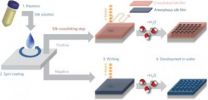(Press-News.org) Since the dawn of civilization people were searching for clues to longevity and trying to extend human lifespan. But only in the past two decades with the advances in genetic sequencing, epigenetic analysis, and increased government investments the area experienced rapid expansion in the knowledge base, allowing scientists to develop comprehensive models and theories of aging. And while there is still much disagreement among scientists, the evolutionary theories are dominating the field. These theories predicted existence of certain genes that provide selective advantage early in life with adverse effects on lifespan later in life or longevity insurance genes. Indeed, the study of human and animal genetics is gradually identifying new genes that increase lifespan when overexpressed or mutated—gerontogenes. Furthermore, genetic and epigenetic mechanisms are being identified that have positive effects on longevity.
"The study of the effects of mutations and epimutations on life expectancy and the aging rate expands the range of potential pharmacological and genoteraputic targets, as well as biomarkers of treatment of aging-dependent pathologies," said professor Alexey Moskalev, PhD, DSc, head of the laboratories for aging research at the Institute of Biology of the Russian Academy of Sciences and at the Moscow Institute of Physics and Technology.
The international group of scientists performed a comprehensive analysis of the genetic and epigenetic mechanisms and demonstrated that the majority of the genes, as well as genetic and epigenetic mechanisms that are involved in regulation of longevity, are highly interconnected and related to stress response. Also, for the first time, the group performed a comprehensive analysis of government research grants related to the genes involved in aging. One of the tools that may help understand the direction of scientific research that is still unpublished are research grant abstracts. To better understand the general trends in aging genetics, the funding and citation information for the longevity genes was collected using the International Aging Research Portfolio (IARP) system as well as the NCBI PubMed system.
Grants analysis led to interesting conclusions. The science of aging genetics is a comparatively new field. P53 was discovered in 1979 and implicated in aging in 1987. On average, genes in Table 2 were discovered 21 years ago and it took 9.7 years between the first citation and the first citation with "aging." The approximate amount of funding spent on genes related to aging is at over $8.5 billion with over 195,000 citations with the most funding spent on genes involved in stress response. On average approximately 7.4% of the funding was spent on projects with "aging" in the grant application and this was consistent across all three categories. The average amount of funding per citation was over $43,900. The largest amount of funding spent on a single gene with "aging" in the grant abstract was $195 million, which represents fewer than 5% of the total funding spent on P53 research. SIRT1 and homologs is the only gene with over $100 million spent on analyzing its role in aging with just under 14% of the funding spent on non-aging related projects. Most of the genes related to aging and longevity were associated with other biologic processes, and most of the funding and publications citing these genes is related to areas other than aging.
"While most scientists rely on published research data and scientific conferences to follow the advances their areas of research, the vast amount of knowledge is codified in the published research grant abstracts and associated metadata. A comprehensive analysis of government grants and related publications shows that aging research is an emerging field and that only a minor fraction of the research dollars spent on genes implicated in aging and longevity was actually intended for aging research," said professor Alex Zhavoronkov, PhD, director of the Biogerontology Research Foundation, UK.
The team also performed the signaling pathway analysis of the genes implicated in aging and longevity and demonstrated that that most of the gerontogenes are members of the stress response pathways that confirm the existence of genetics "longevity program." As a rule, genes—regulators of longevity program—suppress mild stress response and mutations that make some of those pathways less efficient and provide life-extension benefits. Mild overexpression of effector longevity genes, involved with stress-response to DNA, protein, or other cellular damages, prolong lifespan. While moderate stress induces "longevity program" by stimulating expression of life assurance genes and promoting prevention or elimination of errors, including the novel and spontaneous ones, chronic or acute stress exposure exhausts the defense mechanisms and therefore accelerates aging. Pro-aging and anti-aging gene-determined processes exist on all levels of organismal system—from molecules to systems (metabolic, endocrine, immune, and inter-cellular communication). Their multi-level organization, the interpenetration of levels, a combination of regular and stochastic elements, is what makes the process of aging a fractal process.
The results of the study will be published Open Access in the prestigious peer-reviewed journal Cell Cycle, available at https://www.landesbioscience.com/journals/cc/article/28433/.
INFORMATION:
In addition to the cell cycle and cell division, Cell Cycle covers all topics from man to virus, from DNA to RNA, from aging to development, from cell senescence to stem cells, from apoptosis to autophagy, from cancer to neurobiology, from molecular and theoretical biology to medicine and therapy. Established in 1997, Landes Bioscience is an Austin, Texas-based publisher of biology research journals and books. For more information on Landes Bioscience, please visit http://www.landesbioscience.com/.
Drilling into the trends in genetics and epigenetics of aging and longevity
2014-03-28
ELSE PRESS RELEASES FROM THIS DATE:
Research clarifies health costs of air pollution from agriculture
2014-03-28
Ammonia pollution from agricultural sources poses larger health costs than previously estimated, according to NASA-funded research.
Harvard University researchers Fabien Paulot and Daniel Jacob used computer models including a NASA model of chemical reactions in the atmosphere to better represent how ammonia interacts in the atmosphere to form harmful particulate matter. The improved simulation helped the scientists narrow in on the estimated health costs from air pollution associated with food produced for export – a growing sector of agriculture and a source of trade ...
NIST issues final Joplin tornado report, begins effort to improve standards and codes
2014-03-28
The National Institute of Standards and Technology (NIST) has released the final report on its technical investigation into the impacts of the May 22, 2011, tornado that struck Joplin, Mo. The final report is strengthened by clarifications and supplemental text suggested by organizations and individuals from across the nation in response to the request for comments on the draft Joplin report, released Nov. 21, 2013.
The revisions did not alter the investigation team's major findings or its 16 recommendations, highlighted by NIST's call for nationally accepted standards ...
Whether they reduce fat or not, obesity programs lower kids' blood pressure
2014-03-28
BUFFALO, N.Y. – One of the serious health consequences of obesity is elevated blood pressure (BP), a particular problem in children because research has found that high BP in children usually follows them into adulthood, carrying with it a wide range of possible negative consequences.
Even modest elevations in the BP of adolescents, according to recent research, can pose cardiovascular problems later in life.
A systematic review and meta-analysis of published studies of the effect of child obesity intervention programs on blood pressure has found that whether such programs ...
Stigmas, once evolutionarily sound, are now bad health strategies
2014-03-28
Stigmatization may have once served to protect early humans from infectious diseases, but that strategy may do more harm than good for modern humans, according to Penn State researchers.
"The things that made stigmas a more functional strategy thousands of years ago rarely exist," said Rachel Smith, associate professor of communication arts and sciences and human development and family studies. "Now, it won't promote positive health behavior and, in many cases, it could actually make the situation worse."
Stigmatizing and ostracizing members stricken with infectious ...
Fabricating nanostructures with silk could make clean rooms green rooms
2014-03-28
MEDFORD/SOMERVILLE, MASS. -- Tufts University engineers have demonstrated that it is possible to generate nanostructures from silk in an environmentally friendly process that uses water as a developing agent and standard fabrication techniques. This approach provides a green alternative to the toxic materials commonly used in nanofabrication while delivering fabrication quality comparable to conventional synthetic polymers. Nanofabrication is at the heart of manufacture of semi-conductors and other electronic and photonic devices.
The paper describing this work, "All ...
Safety and immunogenicity of 2 doses of the HPV-16/18 AS04 adjuvanted vaccine Cervarix
2014-03-28
A recent study in the journal Human Vaccines & Immunotherapeutics, showed that two doses of the HPV-16/18 AS04-adjuvanted vaccine Cervarix (GlaxoSmithKline) are non-inferior to three-doses in the current schedule.
Since high coverage and compliance rates can be difficult to achieve with the current three-dose HPV vaccineregimen, several studies have looked at the possibility of reducing the number of doses. Proof-of-principle that a two-dose schedule can provide sufficient protection against cervical cancer came initially from a study performed in Costa Rica in 2011. ...
Repeated hUCB injections may improve prognosis of children with deadly inherited disorder
2014-03-28
Putnam Valley, NY. (Mar. 28 2014) – New insight has been gained into treating an inherited disorder that creates serious neurological and behavioral disabilities in children and usually leads to death in the teen years.
In a recent study into the effects of human umbilical cord blood mononuclear cells (hUCB MNCs) when they are injected to counter the symptoms and progression of Sanfilippo syndrome type III B (MPS III B), researchers found that repeated injections into laboratory mice modeled with the disorder had clear benefits for the mice receiving multiple injections ...
Rainbow-catching waveguide could revolutionize energy technologies
2014-03-28
BUFFALO, N.Y. – More efficient photovoltaic cells. Improved radar and stealth technology. A new way to recycle waste heat generated by machines into energy.
All may be possible due to breakthrough photonics research at the University at Buffalo.
The work, published March 28 in the journal Scientific Reports, explores the use of a nanoscale microchip component called a "multilayered waveguide taper array" that improves the chip's ability to trap and absorb light.
Unlike current chips, the waveguide tapers (the thimble-shaped structures above) slow and ultimately absorb ...
Gene may predict if further cancer treatments are needed
2014-03-28
DALLAS – March 28, 2014 – UT Southwestern Medical Center researchers are developing a new predictive tool that could help patients with breast cancer and certain lung cancers decide whether follow-up treatments are likely to help.
Dr. Jerry Shay, Vice Chairman and Professor of Cell Biology at UT Southwestern, led a three-year study on the effects of irradiation in a lung cancer-susceptible mouse model. When his team looked at gene expression changes in the mice, then applied them to humans with early stage cancer, the results revealed a breakdown of which patients have ...
Erectile dysfunction can be reversed without medication
2014-03-28
Men suffering from sexual dysfunction can be successful at reversing their problem, by focusing on lifestyle factors and not just relying on medication, according to research at the University of Adelaide.
In a new paper published in the Journal of Sexual Medicine, researchers highlight the incidence of erectile dysfunction and lack of sexual desire among Australian men aged 35-80 years.
Over a five-year period, 31% of the 810 men involved in the study developed some form of erectile dysfunction.
"Sexual relations are not only an important part of people's wellbeing. ...





